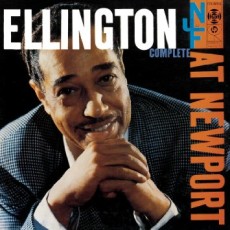
Daily Dose Of Jazz…
Duke Ellington was born Edward Kennedy Ellington on April 29, 1899 in Washington, D.C. to parents who were pianists with his mother primarily playing parlor songs and his father preferring operatic arias. At the age of seven, he began taking piano lessons from Marietta Clinkscales. Surrounded by dignified women who reinforced his manners and taught him to live elegantly, his childhood friends noticed that his casual, offhand manner, easy grace and dapper dress and began calling him “Duke”.
Though Ellington took piano lessons, he was more interested in baseball. Ellington went to Armstrong Technical High School in Washington, D.C. and his first job was selling peanuts at the Washington Senators baseball games. Sneaking into Frank Holiday’s Poolroom at the age of fourteen and hearing the poolroom pianists play ignited Duke’s love for the instrument, and he began to take his piano studies seriously. But in the summer of 1914, while working as a soda jerk at the Poodle Dog Cafe he wrote his first composition, Soda Fountain Rag, created by ear, as he had not yet learned to read and write music.
He took private lessons in harmony from Dunbar High School music teacher Henry Lee Grant and with guidance of pianist and bandleader Oliver “Doc” Perry, he learned to read sheet music, project a professional style, and improve his technique. He was equally inspired by his encounters with James P. Johnson, Lukey Roberts, Will Marion Cook, Fats Waller and Sidney Bechet.
Playing gigs in cafés and clubs around D.C. and working as a freelance sign-painter, in 1917 Ellington began assembling groups to play for dances beginning with The Duke Serenaders. His group ventured to Harlem joining Wilber Sweatman’s orchestra, becoming a part of the Renaissance. Striking out on their own they hit roadblocks and though Willie “The Lion” Smith introduced them to the scene and gave them some money, they ultimately returned to D.C. discouraged.
A 1923 gig in Atlantic City, New Jersey led to the prestigious Exclusive Club in Harlem, followed by the Hollywood Club and a four-year engagement, giving Ellington a solid artistic base. He would go on to lead The Washingtonians, record eight records, contribute four songs to the 1925 all-Black revue Chocolate Kiddies starring Lottie Gee and Adelaide Hall, and struck an agreement of 45% interest in his future with agent-publisher Irving Mills. He would record on nearly every label at the time giving him popular recognition.
In 1927 he began his engagement at the Cotton Club receiving national attention from weekly radio broadcasts from the club gave Ellington national exposure. He gained worldwide recognition with Adelaide Hall on Creole Love Call and Black and Tan composed by Bubber Miley. He would go on to play for Florenz Ziegfeld, compose music for film scores, hire Ivie Anderson and create hits It Don’t Mean A Thing If It Ain’t Got That Swing, Mood Indigo, Sophisticated Lady, Solitude and In A Sentimental Mood.
By the 1930s as the Depression worsened, Duke was still able to produce music and continue a high profile with his radio broadcasts. He had hits like Caravan and I Let a Song Go Out of My Heart. His short film Symphony In Black introduced Billie Holiday on A Rhapsody of Negro Life, winning an Academy Award for Best Musical Short Subject.
In 1939 he began his association with Billy Strayhorn and the stage turned up again with more great music collaborations, such as Take The “A” Train. Among the musicians in Duke’s orchestra at one time or another were Ben Webster, Cootie Williams, Ray Nance, Johnny Hodges, Jimmy Blanton, Herb Jeffries, Al Hibbler, Mary Lou Williams, Sonny Greer, Clark Terry, Louie Bellson, and many others to numerous to mention here.
Ellington’s appearance at the Newport Jazz Festival on July 7, 1956 returned him to wider prominence and introduced him to a new generation of fans with Paul Gonsalves’ 27-chorus marathon solo, culminating in an album release.
Over the next two decades Duke continued to tour, compose and record, have statues erected, schools , streets, parks, buildings and bridges named for him, and a coin and a stamp honoring him. He has an annual competition, The Essentially Ellington High School Jazz Competition and Festival at Jazz At Lincoln Center, has a star on the Hollywood Walk of Stars, was awarded a special Pulitzer Prize, received a Presidential Medal of Freedom, a Grammy Lifetime Achievement Award, Legion Of Honor from France, won 12 Grammy Awards, and has nine songs inducted into the Grammy Hall of Fame among too many to list.
Pianist, bandleader and composer Duke Ellington, who composed to the very last days of his life and never came off the road, passed away on May 24, 1974 of complications from lung cancer and pneumonia, a few weeks after his 75th birthday.
![]()
More Posts: piano
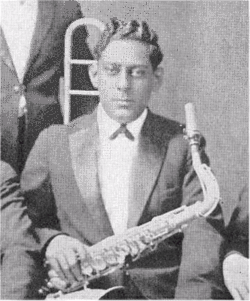
Daily Dose Of Jazz…
Lorenzo Tio Jr. was born on April 21, 1893 in New Orleans, Louisiana and raised in Bay St. Louis, Mississippi. Following in the footsteps of his father Lorenzo Sr. and his uncle Louis “Papa”, he also became a master clarinetist. Their method of playing the instrument, which involved the Albert system, a double-lip embouchure and soft reeds, was seminal in the development of the jazz solo.
Tio Jr.was instrumental in bringing classical music theory to the ragtime, blues and jazz musicians of New Orleans and he eventually played jazz himself. His main instrument was clarinet also played the oboe and joined Manuel Perez’s band in Chicago, Illinois in 1916 and Armand J. Piron’s from 1918 to 1928, recording with Piron, Bechet, Jelly Roll Morton and Clarence Williams.
As an educator among the reed players to impact early jazz who studied under Lorenzo’s direction were Sidney Bechet, Barney Bigard, Johnny Dodds, Omer Simeon, Louis Cottrell Jr., Jimmie Noone and Albert Nicholas. He taught Bigard what would become the main theme to the famous Ellington tune Mood Indigo.
Tio gigged in legendary New Orleans large ensembles such as the Lyre Club Symphony Orchestra during the late 19th century. He played in smaller combos, traditional brass bands, had a standing collaboration with Papa Celestin whenever he was in the Big Easy, and performed with the Tuxedo Brass Band.
Despite his strong ties to New Orleans, he regularly played the New York jazz scene on steamboats running between the state capitol in Albany and the Big Apple. During the late ’20s and early ’30s, He had a regular stint at The Nest Club in New York City. Clarinetist and educator Lorenzo Tio Jr., who also played oboe and tenor saxophone, passed away on December 24, 1933.
![]()
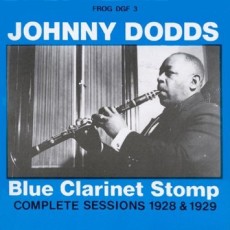
Daily Dose Of Jazz…
Johnny Dodds (pronounced dots) was born April 12,1892 in Waveland, Mississippi and moved to New Orleans in his youth, and studied clarinet with Loranzo Tio. He played with the bands of Frankie Duson, Kid Ory and Joe “King” Oliver.
Dodds went to Chicago, Illinois to play with Oliver’s Creole Jazz Band, with whom he first recorded in 1923. He also worked frequently with his good friend Natty Dominique during this period, a professional relationship that would last a lifetime.
After the breakup of Oliver’s band in 1924, he replaced Alcide Nunez as the house clarinetist and bandleader of Kelly’s Stable. He recorded with numerous small groups in Chicago, most notably Louis Armstrong’s Hot Five and Fot Seven, Jelly Roll Morton’s Red Hot Peppers and Lovie Austin.
Noted for his professionalism and virtuosity as a musician, and his heartfelt, heavily blues-laden style, Dodds was an important influence on later clarinetists, notably Benny Goodman.
Along with his younger brother drummer Warren “Baby” Dodds, they worked together in the New Orleans Bootblacks in 1926. As a leader he recorded prolifically between 1927 and 1929, recording for Paramount, Brunswick/Vocalion, and Victor. Affected by ill he recorded two more sessions in 1938 and 1940 both for Decca before passing away of a heart attack in Chicgo, Illinois on August 8, 1940. In 1987, clarinetist and alto saxophonist Johnny Dodds was inducted into the Down Beat Jazz Hall of Fame.
![]()
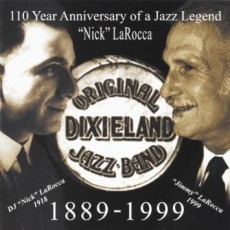
Daily Dose Of Jazz…
Nick LaRocca was born Dominic James LaRocca on April 11, 1889 in New Orleans, Louisiana to poor Sicilian immigrants. Attracted to the music of the brass bands in New Orleans as a child, he covertly taught himself to play the cornet against the wishes of his father who hoped his son would go into a more prestigious profession. From around 1910 through 1916 he was a regular member of Papa Jack Laine’s bands. A solid lead player with a strong lip allowed him to play long parades without let up or to play several gigs in a row on the same day.
In 1916 he joined Johnny Stein’s band to play a job in Chicago, Illinois, that subsequently became the Original Dixieland Jass Band and made their first commercially issued jazz recordings in New York City in 1917 that were hits, making them into celebrities. LaRocca led tours of England and the United States into the early 1920s, suffered a nervous breakdown. H retired from music until 1936 reuniting the ODJB for a successful tour and more recordings. He proclaimed that he and his band were the inventors of the now nationally popular swing music. Personality conflicts broke up the band again in 1937, and he again retired from music.
In the 1950s he wrote numerous vehement letters to newspapers, radio, and television shows, stating that he was the true and sole inventor of jazz music, damaging his credibility and provoking a backlash against him, his reputation and career. He donated his large collection of papers related to the O.D.J.B. to Tulane University in 1958 and worked with writer H.O. Brunn on the book The Story of the Original Dixieland Jass Band. Written during the Jim Crow era, he is acknowledge as an important figure, much in his own mind because he could not live with the thought that Negroes invented the music, in taking jazz from a regional style to international popularity, the leader of the most influential jazz band of the period from 1917 to 1921, and a good player in a very early jazz style on records.
Nick’s playing and recordings were an important early influence on such later jazz trumpeters as Red Nichols, Bix Beiderbecke and Phil Napoleon. His 1917 composition Tiger Rag is one of the most important and influential jazz standards of the twentieth century having some 136 cover versions by 1942 alone. It was covered by Louis Armstrong in several different versions throughout his career, while Duke Ellington, Art Tatum, Charlie Parker, The Mills Brothers, Frank Sinatra, Benny Goodman, Les Paul and Kid Ory also recorded important and influential cover versions of the jazz standard.
In 2006, his 1917 recording of Darktown Strutters Ball with the Original Dixieland Jass Band was inducted into the Grammy Hall of Fame. Cornetist Nick LaRocca, who was part of what is generally regarded as the first recorded jazz band, releasing the first jazz recording Livery Stable Blues in 1917, passed away on February 22, 1961 in New Orleans.
![]()
More Posts: cornet
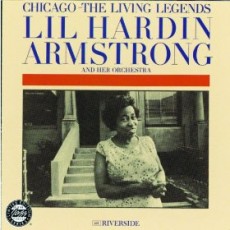
Daily Dose Of Jazz…
Lil Hardin Armstrong was born Lillian Hardin on February 3, 1898 in Memphis, Tennessee and grew up with her grandmother learning hymns, spirituals and classics on the piano, but she was drawn to pop music and later blues. Her initial piano instruction came from her third grade teacher, Miss Violet White, followed by enrollment in Mrs. Hook’s School of Music, but it was while attending Fisk University that she was taught a more acceptable approach to the instrument.
In 1918, Lil moved to Chicago and landed a job as a sheet music demonstrator at Jones Music Store for $3 a week. Shortly afterward bandleader Lawrence Duhé offered her $22.50 she joined him. From cabaret to the De Luxe Café to Dreamland playing behind Alberta Hunter and Ollie Powers. Replace by King Oliver’s Creole Jazz Band, he asked her to stay, which led to an engagement in San Francisco, back to Chicago playing eventually with Oliver again.
Hardin met Louis Armstrong when Oliver sent for him and subsequently were married in 1924. She took him shopping and taught him how to dress more fashionably, and finally convinced him to strike out on his own. Moving to New York City he joined Fletcher Henderson, while she stayed in Chicago with Oliver and then leading her own band.
Hardin, Armstrong, Kid Ory, Johnny St. Cyr and Johnny Dodds comprised the Hot Five recordings for Okeh Records. She would go on to record sessions with the same group as a leader for Vocalion, Columbia Records and New Orleans Wanderers. In the late 1920s Hardin and Louis parted ways and she formed a band with a cornet player she considered Louis equal, Freddie Keppard. In the 1930s, she sometimes billed herself as Mrs. Louis Armstrong, led an All Girl Orchestra, then a mixed-sex big band, which broadcasted nationally over the NBC radio network.
The same decade she recorded a series of sides for Decca Records as a swing vocalist, recorded with Red Allen, and back in Chicago collaborated with Joe Williams, Oscar Brown Jr., Red Saunders and Little Brother Montgomery. Throughout the rest of her career she continued to perform and record, and began writing an autobiography that she never completed. A month after attending Louis’ funeral in New York City, she was performing at a televised memorial concert for Louis, Lil Hardin Armstrong collapsed at the piano and died on the way to the hospital.
Pianist, composer, arranger, singer and bandleader Lil Hardin Armstrong, second wife and recording collaborator of Louis Armstrong in the 1920s, passed away on August 27, 1971. Her compositions have been sampled and revived by many and was inducted into the Memphis Music Hall of Fame in 2014.


